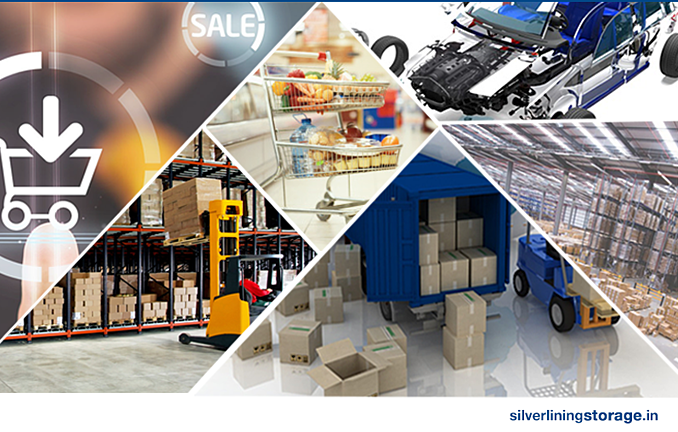The Goods and Services Tax (GST) is pegged to transform India into a single integrated market. In the pre-GST era, the structure and organization of India’s warehousing industry reflected a preoccupation with the multiplicity of tax laws in our country. Market integration in the post-GST era, will bring in a uniform tax regime cuts across regional boundaries and make taxation an irrelevant parameter for the warehousing and distribution. The warehousing sector would be both an enabler and beneficiary of India’s biggest tax reform since independence. Any positive changes in the warehousing and logistics will boost the global competitiveness of our manufactures. In this article, we will discuss the kind of transformation GST will be bringing about in the warehousing sector in greater detail.
Warehouse re-engineering – Location, Size Dynamics
Implementation of GST is presenting companies the life time opportunity to restructure their logistics and warehousing in terms of locations, size, operations and services.
The old structure gave rise to the practice of companies maintaining a warehouse in each state in order to avoid central taxes. GST will facilitate centralization and consolidation without adding, rather reducing, the costs.
Companies can now make decisions on warehouse location, size, technology adoption, inventory and operations management based on logical factors like proximity to consumption centers, manufacturing locations, optimization of goods movement, and inventory control strategy etc. The cost savings that flow therefrom will mean lower supply chain costs for manufacturers and reduced product prices for consumers.
Warehouse Consolidation
Post GST, demand for large warehouses in strategic locations will rise, and there will be a corresponding decrease in demand for smaller warehouses. As more industry players go for consolidation, it will be difficult for warehouse operations in unorganized sectors to match the efficiencies and speed that large organized warehousing delivers. This will set the stage for mergers and acquisitions that will further intensify consolidation in the sector and helping smaller players leverage larger infrastructures for greater operational efficiencies.
Consolidation will mean lesser number of stocking points, no stock outs and lower demand variation. This in turn improves demand planning. In the current scenario, a manufacturer stocks 5 units of product A in 10 small warehouses, after GST implementation the same manufacturer would stock 25-30 units of the same product A in one mega warehouse, without compromising order fulfillment efficiency. The economies of scale due to GST-fueled consolidation are substantial such as better supply chain planning and optimization, efficient inventory management, less tied up capital, reduced overhead costs and increased operational efficiencies.
GST: The Technology Enabler
Warehouse automation is expensive, starting from ERP solutions extending all the way to robotic picking systems different degrees of warehouse automation is possible. The pre-GST distributed warehousing model kept the size of warehouses small, which made any investment on automation an expensive proposition for warehouse operators. As a result, a large number of warehouses in the country are still reliant on a labor-intensive manual system which is slow and prone to errors.
Post GST, the warehousing sector is looking to consolidate its distribution apparatus through mergers, acquisitions and new capacity addition. Greater automation will benefit the sector by providing it some protection from rising labor costs in a growing economy and reducing turnaround time to bring it closer to international standards.
GST implementation makes full or partial automation with latest Warehouse Management Systems (WMS) and modern robotics, economically feasible for mega warehouse hubs. Larger warehouses can deploy state-of-the art planning and warehousing management systems to improve service levels and increase the safety of warehouse operations.
In the pre-GST era, tax optimization and not higher operational efficiency was the end goal of warehouse organization. Manufacturers and third-party logistics companies cleverly sidestep tax laws by following a scattered and decentralized model of storage and distribution. They transfer stock to warehouses set up in various states of operations, avoiding central taxes on inter-state trade to a large extent. A lower tax bill comes at the cost of better operational efficiency that large structured warehouses in centralized geographic locations with better connectivity offer.
Manufacturing companies have to revamp their warehouse organization and logistics network to leverage the opportunities presented by GST implementation. They can do so either by going for consolidation and supply chain reengineering or by outsourcing logistics to 3PL service providers. Depending on the available land bank and capital deployment capacity, companies can choose either.
Manufacturers: What this means for them
If we were to look at industries (manufacturers) that will reap maximum gains from the switch over to GST and the changes in warehousing landscape that flow from it, a special mention must be made of the consumer product group. The consumer products will witness the maximum drop in logistics costs as percentage of total sales; currently they have warehouses in every state to avoid multiple state taxes. Consumer-oriented industries will thus feel a higher impact of GST on their warehouse operations model in comparison to capital intensive industries.
GST would allow manufacturers to set up just a few and big warehouses region wise to derive time and cost savings through economies of scale. They would follow the hub-and-spoke model for freight movement from the large warehouses to different manufacturing plants and wholesale and retail outlets.
Logistics Outsourcing
With the shift in Indian logistics industry from unorganized to organized format, coupled with growth in consumer industries and increasing dispersal in demand, we may see investment opportunities in the areas such as multimodal transportation, logistics parks, e-commerce and value-added services. A lot of foreign multinational logistics companies are exploring business opportunities in India.
The increase in the availability of organized and efficient players, may compel manufacturers to consider outsourcing logistics to 3rd party logistics service providers (3PL). Outsourcing minimizes capex costs, is cost effective and lets companies focus on their core competencies (products).
GST implementation presents a golden opportunity for 3PL players to make inroads into the SME and unorganized manufacturing markets. Extending modern warehousing methods and services to small manufacturers can improve the export competitiveness of Indian products globally.
Outlook & Recommendations
The onset of GST augurs well for the warehousing sector. This much needed tax reform will unlock the much needed supply chain efficiencies for Indian manufacturers. Uniform taxation will shift the focus from tax optimization to more important factors like operational efficiency and scalability. The industry stands ready for a slew of mergers and acquisitions, which will bring smaller players into structured supply chains. More sophisticated 3PL services will encourage outsourcing and reduce supply chain capex costs for manufacturers.
Post GST, the outlook looks positive and inclusive for India’s warehousing sector. Companies should start evaluating the suitability of their current storage and distribution model to the post GST era. Based on the unique business context and existing supply chain investments company must decide on the extent of warehouse reengineering they need to undertake. An early start would help.
Topics: Warehousing Industry News, GST


